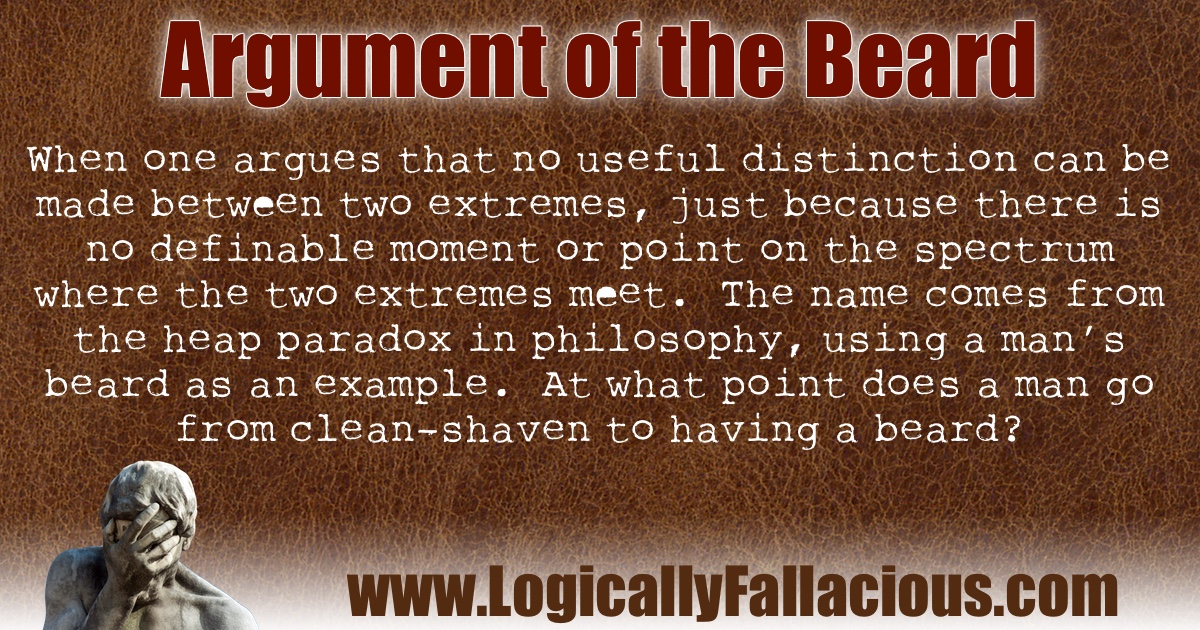(also known as: fallacy of the beard, heap fallacy, heap paradox fallacy, bald man fallacy, continuum fallacy, line drawing fallacy, sorites fallacy)
Description: When one argues that no useful distinction can be made between two extremes, just because there is no definable moment or point on the spectrum where the two extremes meet. The name comes from the heap paradox in philosophy, using a man’s beard as an example. At what point does a man go from clean-shaven to having a beard?
Logical Form:
X is one extreme, and Y is another extreme.
There is no definable point where X becomes Y.
Therefore, there is no difference between X and Y.
Example #1:
Why does the law state that you have to be 21 years old to drink? Does it really make any difference if you are 20 years and 364 days old? That is absurd. Therefore, if a single day makes no difference, then a collection of 1095 single days won’t make any difference. Therefore, changing the drinking age to 18 will not make any difference.
Explanation: Although this does appear to be typical 18-year-old thinking (sorry 18 year-olds), it is quite a common fallacy. Just because any single step makes no apparent difference, there is a difference that becomes more noticeable as the number of those steps increase.
Example #2:
Willard: I just realized that I will probably never go bald!
Fanny: Why is that?
Willard: Well, if I lose just one hair, I will not be bald, correct?
Fanny: Of course.
Willard: If I lose two hairs?
Fanny: No.
Willard: Every time I lose a hair, the loss of that one hair will not make me bald; therefore, I will never go bald.
Fanny: Congratulations, you found the cure to baldness -- stupidity!
Explanation: What Willard did not take into consideration is “baldness” is a term used to define a state along a continuum, and although there is no clear point between bald and not bald, the extremes are both clearly recognizable and achievable.
Exception: The larger the spread, the more fallacious the argument, the smaller the spread, the less fallacious.
Fun Fact: There are very few clear lines we can draw between categories in any area of life. Categories are human constructs that we create to help us make sense of things, yet they often end up creating more confusion by tricking us into thinking abstract concepts actually exist.

References:
Murray, M., Murray, R. M., & Kujundzic, N. (2005). Critical Reflection: A Textbook for Critical Thinking. McGill-Queen’s Press - MQUP.